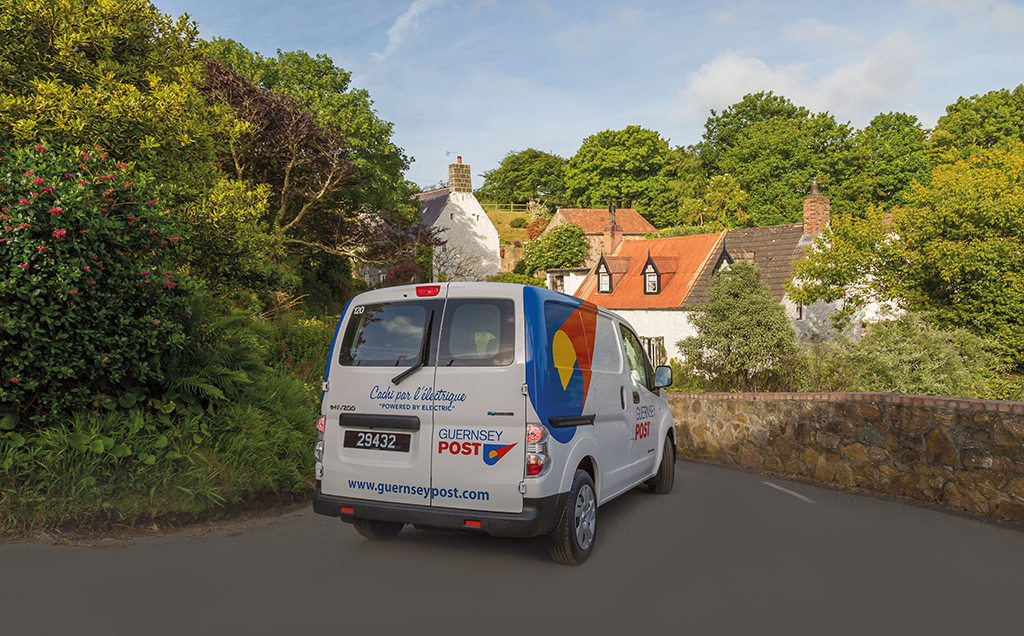Zero-emission postal deliveries in Guernsey

Guernsey Post has introduced 19 electric vans to its postal delivery fleet. GreenFleet chats to Dawn Gallienne to find out how the company finds the vans and how the island is ideal for electrification
How and where are the electric vehicles used?
The digital revolution has seen a well‑publicised demise in letter mail but conversely for Guernsey Post the online shopping boom has seen exceptional growth in parcel volumes. Postal companies all over the world are having to adapt to keep pace with this change and Guernsey Post is no exception. Last year the Company launched a project that is now near to completion and which will see all but 4 of its bicycle delivery rounds combined with its parcel deliveries meaning 72 of its 76 delivery rounds will now be completed in a van.
After a successful trial earlier this year, Guernsey Post introduced 19 Nissan e-NV200 electric vans into its delivery fleet.
The vans have enough load capacity to deliver our ever‑increasing parcel volumes and the size of the vans are suitable for our roads.
Where are they recharged?
The vans are charged at Envoy House which is the Sorting Office and Head Quarters. There are eight charging posts, capable of charging up to sixteen vehicles simultaneously.
How much are you saving?
The return on investment is calculated based on 85 miles per charge at a cost of about 2p per mile, compared to 21p per mile for diesel and we expect to see payback within five years.
How did the drivers react to the vehicles initially and how do they find them now?
Feedback from the posties driving the new electric vans has been very positive and the investment has generated a lot of interest from members of the public considering whether to make the switch to electric vehicles themselves.
What are your plans for the remaining vehicles in the fleet?
Guernsey Post has a delivery fleet of over 100 vehicles and have committed to a full fleet of electric vehicles within the next five years, replacing older vehicles with electric equivalents as they come to the end of their life. They are also now exploring electric alternatives for its small number of larger trucks, which are used primarily to convey mail to and from the airport.
Guernsey as a small island with lots of stop start driving is an ideal location for electric vehicles – no engine idling or engine revving required – and no fumes.
Is there an appetite on the island to go electric?
Renewable energy and the use of electric vehicles in Guernsey is definitely on the rise, and with quite a few local companies following Guernsey Post’s lead the future is looking bright. With the recent announcement that the sale of new conventional petrol and diesel vehicles will be banned in the UK and France from 2040 it will be interesting to see the developments over the next ten years.






